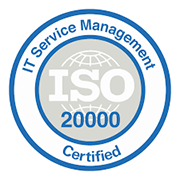What are the advantages of migrating to S/4HANA? What aspects should be considered in order to plan the migration process correctly?
Regardless of the fact that SAP ERP’s end-of-support date is already too close, the truth is that S/4HANA is the ultimate complete and modular solution with the analytics and AI capabilities needed to move your business forward.
This makes it increasingly necessary to perform this conversion process in order to ensure system maintenance and, most importantly, to benefit from the new S/4HANA enhancements.
Here are some frequently asked questions that users have when planning the switch to S/4HANA.
What are the costs associated with SAP S/4HANA migration and how can they be managed?
Investment in SAP S/4HANA migration can vary depending on the size and complexity of the company, as well as the migration approach(SAP HANA cloud or SAP HANA on premise). Costs include software licenses, consulting services, hardware (in case of local implementation) and staff training. To manage costs, we recommend careful planning and conducting a return on investment (ROI) analysis to assess the long-term financial benefits.sa
How long does it take to migrate to SAP S/4HANA and how do you minimize downtime?
Migration time depends on several factors, such as the scope of the project, the amount of data to be migrated and the complexity of the business processes. To minimize downtime, it is essential to perform detailed planning and consider strategies for maintaining ERP systems during the migration process without interfering with this process. To shorten the production migration process and accommodate the shutdown window, it is necessary to maintain the maximum possible parallelization and maximize the allocated hardware resources. Working with an experienced SAP partner can streamline the process and minimize risk.
What are the common challenges companies face during migration to S/4HANA?
Some common challenges include data preparation, business process adaptation, staff training and change management. It is also crucial to ensure compatibility of third-party solutions with S/4HANA. The experience of a
partner
can help address these challenges and avoid potential problems.

What are the key benefits of migrating to SAP S/4HANA?
The migration to SAP S/4HANA delivers significant benefits, such as increased business agility, more informed decision making through real-time analytics, enhanced user experience and improved operational efficiency. It also provides a solid foundation for future innovation with technologies such as artificial intelligence and the Internet of Things (IoT), as well as being able to get the new SAP product evolutions that are not available in the old SAP ERP.
How can I assess if my company is ready for S/4HANA migration?
SAP offers tools such as the SAP Readiness Check or the Customer Evolution Kit to assess the right readiness and migration path for your company. It is also important to conduct an internal process and systems assessment, as well as to involve SAP experts to obtain a complete readiness assessment.
How will the migration to SAP S/4HANA affect my existing business processes?
SAP S/4HANA migration does not usually require an overhaul and adaptation of existing business processes per se. However, this process presents an opportunity to optimize and simplify processes. This change process can take place during or after the migration because, depending on the processes affected, it may require additional effort in the planning and training stage. A detailed analysis of current processes and collaboration with SAP experts can help ensure a smooth transition.
How can I ensure data security during migration to S/4HANA?
Data security is a key concern. During migration, it is essential to perform regular backups, encrypt sensitive data and follow SAP security best practices. In addition, consider implementing advanced security solutions and training staff in safe practices.
What are the differences between SAP S/4HANA on-premise and SAP S/4HANA Cloud?
SAP S/4HANA on-premise is deployed on a company’s on-premises servers or in a cloud contracted by the customer or a service partner, while SAP S/4HANA Cloud runs in the SAP cloud. The choice depends on your company’s needs and preferences. The SAP HANA Cloud version typically offers easier upgrades and lower upfront investment, while the SAP HANA on-premise version provides greater control over the infrastructure.
What is the role of an SAP partner in the migration process?
An SAP partner plays a crucial role in providing expertise, advice and support throughout the migration process. They assist in the planning, execution and optimization of the migration, ensuring that business objectives are met and minimizing risks.
What are the best practices for change management during a migration to SAP S/4HANA?
Change management is essential for a successful migration. This involves proactive communication with employees, proper training on new S/4HANA functionality and processes, and the creation of an internal adoption team. A gradual approach and continuous feedback are also critical to ensure that employees adapt effectively.









